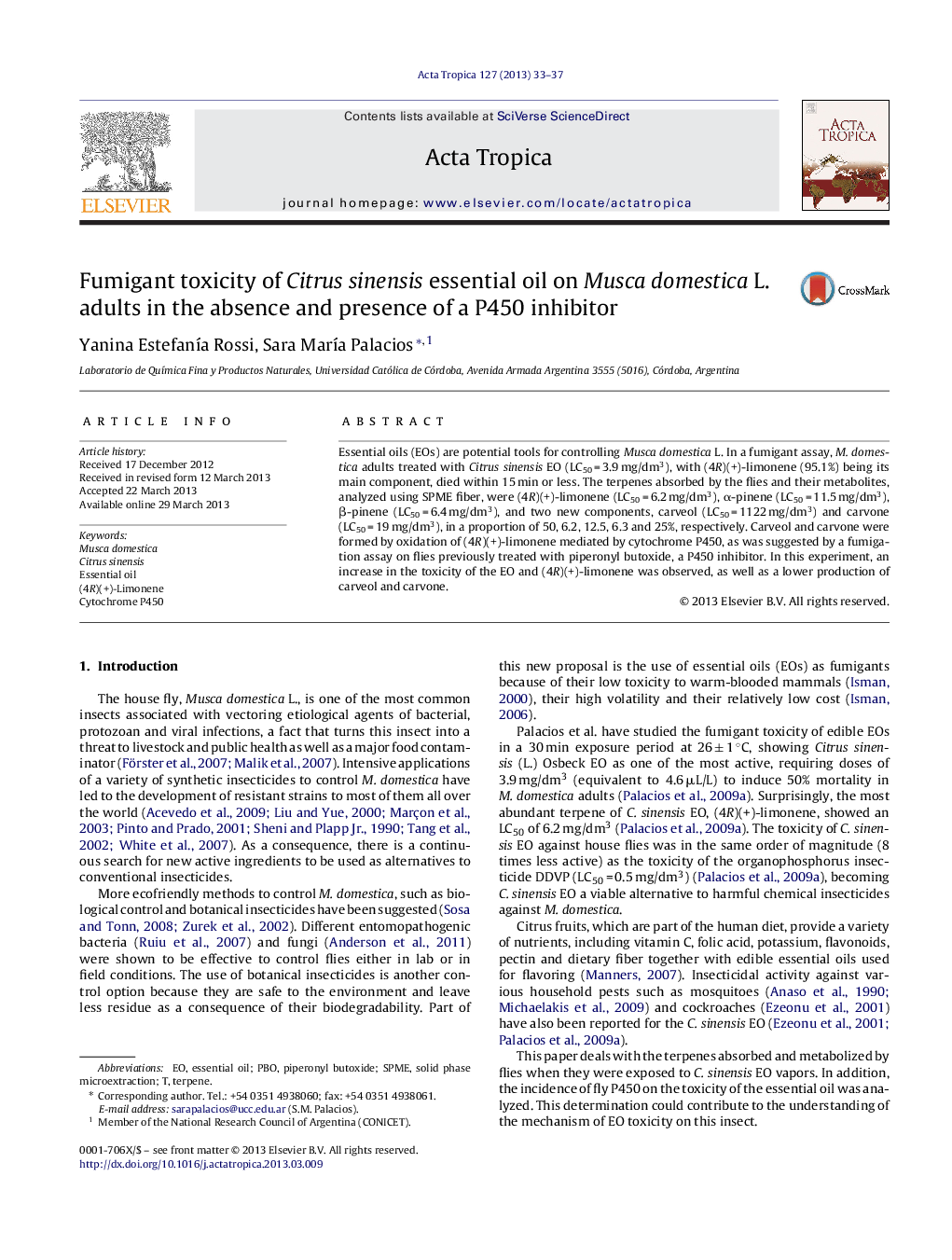| Article ID | Journal | Published Year | Pages | File Type |
|---|---|---|---|---|
| 3393951 | Acta Tropica | 2013 | 5 Pages |
•Citrus sinensis essential oil an effective toxicant against Musca domestica adults.•(4R)(+)-Limonene, α-pinene and β-pinene were absorbed by flies.•Flies metabolized (4R)(+)-limonene to carveol and carvone.•Metabolites were less toxic than (4R)(+)-limonene against fly.•A P450 inhibitor, increases the toxicity of the EO and (4R)(+)-limonene.
Essential oils (EOs) are potential tools for controlling Musca domestica L. In a fumigant assay, M. domestica adults treated with Citrus sinensis EO (LC50 = 3.9 mg/dm3), with (4R)(+)-limonene (95.1%) being its main component, died within 15 min or less. The terpenes absorbed by the flies and their metabolites, analyzed using SPME fiber, were (4R)(+)-limonene (LC50 = 6.2 mg/dm3), α-pinene (LC50 = 11.5 mg/dm3), β-pinene (LC50 = 6.4 mg/dm3), and two new components, carveol (LC50 = 1122 mg/dm3) and carvone (LC50 = 19 mg/dm3), in a proportion of 50, 6.2, 12.5, 6.3 and 25%, respectively. Carveol and carvone were formed by oxidation of (4R)(+)-limonene mediated by cytochrome P450, as was suggested by a fumigation assay on flies previously treated with piperonyl butoxide, a P450 inhibitor. In this experiment, an increase in the toxicity of the EO and (4R)(+)-limonene was observed, as well as a lower production of carveol and carvone.
Graphical abstractToxicity of Citrus sinensis essential oil and of (4R)(+)-limonene against Musca domestica, increase when a P450 inhibitor is used in combination with either of them.Figure optionsDownload full-size imageDownload as PowerPoint slide
